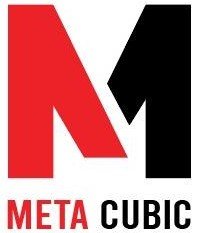how to engage your customer with Best Deal for the shop
Engaging your customers is vital for the success of any business, especially in today’s competitive market. One effective way to captivate your customer’s attention and encourage them to make purchases is by offering the best deals. In this article, we will explore various strategies and techniques to engage your customers with enticing deals that will keep them coming back to your shop.
Table of Contents
- Identifying Customer Needs and Desires
- Offering Personalized Deals
- Leveraging Social Media Platforms
- Creating a Loyalty Program
- Utilizing Email Marketing
- Hosting Exclusive Events and Promotions
- Summary
Understanding Your Target Audience
Before you can effectively engage your customers, it’s crucial to understand who they are and what they value. Conduct thorough market research to identify your target audience’s demographics, interests, and purchasing behaviors. This knowledge will help you tailor your deals to their preferences, increasing the likelihood of conversions.

Identifying Customer Needs and Desires
To engage your customers, you need to address their needs and desires. Analyze their shopping patterns and preferences to identify the types of products or services they are most interested in. By understanding their motivations, you can offer deals that align with their desires and provide value to them.
Conduct Market Research:
- Use surveys, questionnaires, or focus groups to gather insights about customer preferences.
- Analyze customer feedback and reviews to understand their pain points and expectations.
Keep an eye on industry trends and competitor offerings to stay updated.
Engage in Active Listening:
- Train your staff to actively listen to customers during interactions, both in-store and online.
- Pay attention to their questions, comments, and concerns to identify common themes.
Utilize Data Analytics:
- Use customer data analytics tools to gain insights into their purchasing habits and preferences.
- Identify patterns, such as popular products, frequently combined items or preferred price ranges.
Personalize Customer Interactions:
- Collect and store customer information, such as past purchases and preferences, to offer personalized recommendations.
- Leverage technology, like CRM systems, to track customer interactions and customize marketing campaigns.
Offering Personalized Deals
Personalization is key to capturing your customers’ attention. Utilize customer data and segmentation techniques to create personalized deals tailored to specific groups or individuals. By offering personalized discounts or recommendations based on their previous purchases or browsing history, you can demonstrate that you understand their preferences and are dedicated to providing them with the best offers.
Collect Customer Data:
- Encourage customers to provide their contact information, such as email addresses or phone numbers, either through in-store sign-up forms or online registration.
- Request additional details like their birthdate, gender, or shopping preferences to gather more insights.
Implement a Customer Relationship Management (CRM) System:
- Utilize a CRM system to effectively store and manage customer data.
- Keep track of customers’ purchase history, preferences, and interactions to create a comprehensive customer profile.
Segment Your Customer Base:
- Divide your customers into different segments based on factors such as demographics, purchase history, or interests.
- Create segments such as loyal customers, new customers, or high-value customers to target specific groups with relevant deals.
Analyze Customer Behaviour:
- Utilize data analytics tools to analyze customer behavior patterns.
- Identify purchasing trends, browsing habits, and preferences to gain insights into what deals would be most appealing to each customer segment.
Personalize Email Marketing:
- Leverage the customer data collected to send targeted email campaigns.
- Address customers by name and customize the content of the emails based on their preferences and past purchases.
- Send personalized offers, discounts, or exclusive promotions tailored to each customer’s interests.
Leveraging Social Media Platforms
Social media platforms offer a vast opportunity to engage with customers and promote deals. Develop a strong social media presence and share enticing offers and promotions regularly. Encourage your followers to share and tag their friends, increasing the reach of your deals and generating excitement around your brand.
Create Engaging Content:
- Develop compelling content that grabs attention and encourages interaction.
- Share visually appealing images, videos, or graphics that highlight your products and promotions.
- Use persuasive captions and copywriting techniques to create a sense of urgency or excitement around your deals.
Share Exclusive Deals:
- Provide your social media followers with exclusive deals and promotions.
- Offer limited-time discounts, flash sales, or unique coupon codes that are specifically available through social media channels.
Run Contests and Giveaways:
- Engage your audience by running contests or giveaways that require participants to like, share, or comment on your posts.
- Offer prizes or discounts as incentives, ensuring they are related to your products or services.
Collaborate with Influencers:
- Identify influencers or bloggers in your industry who have a substantial following and align with your brand values.
- Collaborate with them to promote your deals and products through sponsored posts or reviews.
Utilize Hashtags:
- Research and use relevant hashtags related to your industry, products, or promotions.
- Incorporate popular or trending hashtags to increase the visibility of your posts and reach a wider audience.
Creating a Loyalty Program
Implementing a loyalty program is an excellent way to engage your customers while rewarding their loyalty. Offer exclusive deals, discounts, or rewards to members of your loyalty program. This not only encourages repeat purchases but also fosters a sense of exclusivity and appreciation among your customers.
Define Program Objectives:
- Clarify the objectives of your loyalty program, such as increasing customer retention, boosting average order value, or encouraging referrals.
- Align the program goals with your overall business objectives and target customer preferences.
Choose a Reward Structure:
- Determine the type of rewards you will offer to loyal customers. This can include discounts, exclusive access to promotions, free products or services, or points-based systems.
- Consider what types of rewards would be most appealing and valuable to your target audience.
Establish Tiers or Levels:
- Create multiple tiers or levels within your loyalty program to incentivize customers to achieve a higher status.
- Each tier can offer progressively better rewards, encouraging customers to make more purchases and reach higher levels.
Collect Customer Information:
- Encourage customers to provide their contact information and opt into the loyalty program during sign-up.
- Gather additional details like demographics, preferences, or birthdays to personalize the program and enhance the customer experience.
Provide Sign-Up Incentives:
- Offer immediate incentives for customers to join the loyalty program, such as a welcome discount or bonus points upon registration.
- Communicate the benefits of the program clearly to encourage sign-ups.
Utilizing Email Marketing
Email marketing remains an effective way to engage with your customers directly. Build an email subscriber list and send out regular newsletters or promotional emails featuring your best deals. Craft compelling subject lines and personalized content to grab their attention and entice them to click through to your shop.
Hosting Exclusive Events and Promotions
Organizing exclusive events or limited-time promotions can create a sense of urgency and excitement among your customers. Consider hosting special sales events, flash sales, or pop-up shops where customers can access exclusive deals. This not only drives engagement but also creates a memorable experience that sets your shop apart from competitors.
Summary
The article emphasizes the importance of understanding your target audience and their preferences. By conducting market research and analyzing customer data, you can gain valuable insights into their purchasing habits, preferences, and price sensitivity. Armed with this knowledge, you can tailor your deals and offers to meet their specific needs, increasing the chances of engagement.




